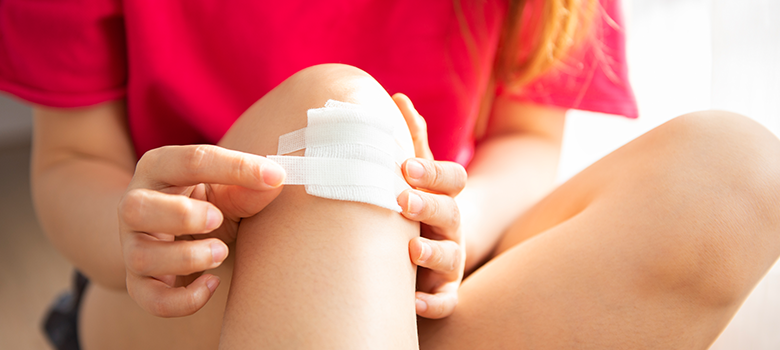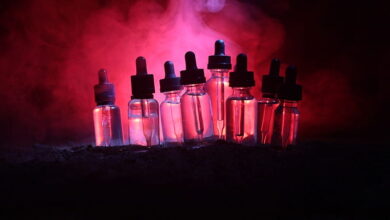How Wounds Heal

Our amazing bodies have incredible healing abilities. Sometimes, watching your body heal after an injury is like magic. You experience new growth and restorative properties that science is still learning about today.
While healing is fantastic to watch, injuries are never fun. Whether you cut yourself making dinner, fall and scrape your knee, or tear a tendon playing sports, injuries and wounds are often painful. Severe wounds also often require more significant medical interventions and longer recovery times.
Understanding how wounds heal will help you recover faster and lower your risk of re-injury. Unfortunately, many people prolong the healing process because they return too quickly or fail to treat wounds properly. Here’s what you need to know about wound healing and how to boost recovery.
The Stages of Wound Healing
Typically, your body will respond to wounds in similar ways. If you’re bleeding, the body jumps into immediate crisis mode, rallying resources to stop the loss of blood. The smaller the wound is, the faster the bleeding will stop because the body sends enough cells to make the blood clot. This usually takes a few minutes. However, severe wounds can take much longer to stop bleeding, and some wounds are impossible to stop the bleeding without surgical intervention or a tunicate on the scene.
After the bleeding stops, a cab forms that protect the sensitive tissue underneath. The wounded area needs the scab to prevent infection and stop blood from escaping. Then, the body can begin the healing process of growing new tissue.
New tissue is usually pink and tender for several weeks until it hardens into new skin over the old wound. This takes weeks. While the surface is repairing, the body is also hard at work building new blood vessels and repairing nerves under the skin. Eventually, the wound shrinks, leaving scar tissue without any trace of the injury. Over time, even large scars shrink and fade. ‘
How to Speed the Healing Process
The body is capable of healing all but the most severe injuries. However, people can impact how quickly their wounds heal by practicing basic wound care. Typically, this means actively engaging in RICE, which stands for rest, ice, compression, and elevation.
Before RICE happens, however, you must stop any bleeding and give the wound time to coagulate. If you don’t stop the bleeding, a major wound can be fatal. People can also lose consciousness due to the loss of blood.
Here’s a breakdown of the RICE method for wound healing.
Rest – Resting the injury means stopping all physical activity that puts pressure on the wound. When you’re wounded, there is often associated muscle and nerve damage in the area. If you keep exercising or stressing the wound, it could cause further damage and interrupt the healing process.
Ice – Ice keeps high levels of inflammation down and starts the process of healing faster. When you ice a wound, it can also reduce pain in the area. Icing is also very helpful for sprains and tendon tears, for example, because it lowers swelling and allows the body to heal more effectively.
Compression – Compression is a very effective tool in fighting any swelling and improving a wound or injury’s range of motion. Typically, compression requires a bandage wrap around the wound on top of any bandage protecting it.
Elevation – Elevating a wound draws blood away from the affected area. It can help stop bleeding faster and reduce swelling.
Medical Attention Is Sometimes Necessary
In some instances, medical intervention is required for a wound to heal fully. A good example of this is a broken bone or torn tendon. The skin has excellent repair qualities. Your body can grow new skin and blood vessels in a matter of weeks. Bones, tendons, and ligaments, however, can take much longer. A wound involving any of these will likely require a cast or surgery to heal.
Talk to a doctor about a different treatment approach if you feel pain or adverse symptoms that persist for days or weeks after the injury. They can recommend medical equipment or medicine that is more effective in healing your type of wound.
The healing process usually takes months to years for severe injuries like an ACL tear in the knee. It can require surgery and regular physical therapy.
Peptides & Wound Healing
Peptides are short chains of amino acids that promote certain biological functions. BPC-157 is a peptide made of 15 amino acids that have many healing properties. For example, in animal models, BPC-157 demonstrated that it promoted wound healing, including tendon-to-bone injuries that usually take very long to heal.
BPC-157 increased the production of type 1 collagen in the affected tissues. It was also an effective anti-inflammatory, which reduced painful swelling in subjects given the peptide. In addition, BPC-157 has neuroprotective properties that regulate serotonin and dopamine production in the brain.



